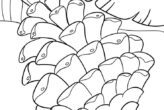Coloring Found to Reduce Agitation and Aggression in Dementia Patients
By Best Coloring PagesMay 1st 2017
Coloring – once thought to be only a childhood activity – is now increasing in popularity among professionals in the medical community that specialize in the treatment and care of patients suffering from dementia. In recent years, there has been an emergent of coloring books, coloring pages, coloring websites, and coloring apps designed for adults. Originally created as an activity to alleviate stress, depression, and anxiety among the adult population, it has now been established through various studies that coloring is an excellent activity to aid those suffering from certain cognitive and physical-based medical conditions – such as dementia. Doctors, counselors, and other types of mental health experts have now discovered that coloring is an activity that successfully aids in reducing agitation and aggression in dementia patients.
Understanding the Agitation and Aggression
Agitation and aggression are commonly experienced by individuals that have been diagnosed with dementia. A dementia patient may become exceptionally restless, move continuously, become visibly upset, or even seem angry. Underlying medical conditions, interactions among medications, changes in schedule and/or environment, misperceived threats, being surrounded by a confusing world, and the inability to obtain and/or negotiate new levels of knowledge or a stimulus may all result in the onset of agitation and aggression. Medical professionals that specialize in dementia will inform those caring for one with dementia to create calmness within the environment, relieve stress and aid in avoiding triggers that result in agitation and aggression, ensure the sufferer has a high level of personal comfort, to encourage physical activities, and to simplify the sufferer’s life in order to reduce agitation and aggression. Coloring is an activity that meets all of these guidelines.
Coloring Calms
As children, we all enjoyed opening up a new box of crayons and delving into a coloring book that contained our favorite cartoon characters, movie characters, super heroes, and/or other types of visually appealing images. The smell of the crayons, the feel of the crayon paper between our fingers, the smell of the coloring pages, and the inner happiness and satisfaction of allowing ourselves to be as creative as we wanted to be were all hallmarks of this exciting activity. As adults, we don’t lose this inner happiness and satisfaction to color; we simply tuck the activity away to tend to more pressing matters. If the dementia patient – who typically has vast amounts of time on their hands – are provided the means to color those around them will find that they are calmer, less agitated, and do not display such immense levels of aggression.
Coloring is a highly-engrossing activity. Not only does it distract, it is an innate activity that we all seem to display a high competency for – even if our memories fail us. The mind becomes calmer during coloring. As the activity is continued, many physiological effects take place. The breathing slows. The heart beats slower. The blood pressure within the body is reduced. Many mental and emotional occurrences happen, too. The dementia patient often feels disconnected, confused, and lost. Coloring is a way for the dementia patient to feel connected to something. It is a means for them to find a part of the world that has meaning. It is a way for them to feel purpose. If you are caring for a dementia patient and want to help reduce agitation and eliminate aggression, turn to free coloring pages! Visit our blog today to learn more about the benefits of coloring: https://www.bestcoloringpagesforkids.com/category/blog




